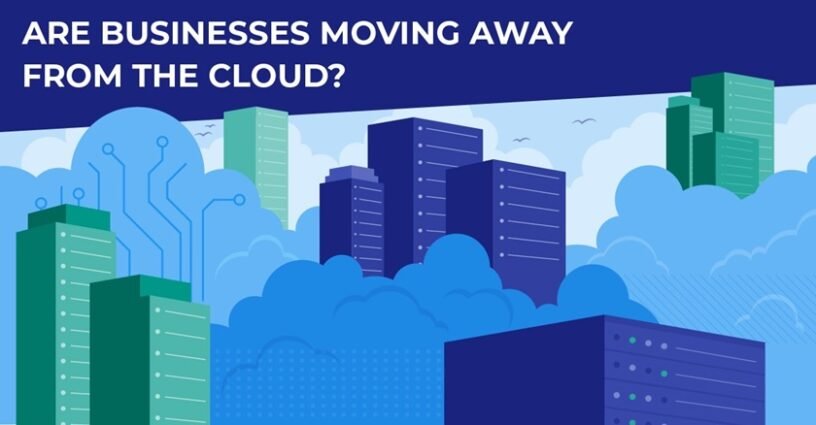Table of Contents
Introduction – Leaving the Cloud
Hey there, tech enthusiasts! If you’ve been following the latest buzz in the tech world, you might have noticed an intriguing trend: some companies are moving away from the cloud. This might sound surprising, especially given how the cloud has been touted as the future of business technology. So, what’s going on? Why are companies making this seemingly counterintuitive move? Let’s dive into it.
The Cloud: A Quick Recap
Before we delve into why companies are leaving the cloud, let’s quickly recap why they moved to the cloud in the first place. The cloud promised several advantages:
- Scalability: Businesses could easily scale their operations up or down based on demand without hefty investments in physical infrastructure.
- Cost Efficiency: Pay-as-you-go models meant companies only paid for the resources they used.
- Flexibility and Remote Access: Employees could access data and applications from anywhere, boosting productivity and collaboration.
- Security and Maintenance: Cloud providers offered advanced security features and handled routine maintenance, freeing up companies to focus on their core operations.
The Shift Away from the Cloud
Despite these advantages, there are several compelling reasons why some companies are now reconsidering their reliance on the cloud.
1. Cost Concerns
While the cloud can be cost-effective, for some companies, especially large enterprises with steady workloads, the costs can add up. A well-publicized example is Dropbox. In 2015, Dropbox decided to move a significant portion of its infrastructure from the cloud (Amazon Web Services) to its own data centers. This move reportedly saved the company nearly $75 million over two years. For businesses with predictable workloads, investing in their own data centers can lead to substantial cost savings in the long run.
2. Performance and Control
Another major factor is performance. Companies that require high performance for critical applications often find that they can achieve better and more consistent performance with on-premises solutions. For instance, Snapchat initially used Google Cloud but eventually moved to its own infrastructure to gain more control over its services and performance. By managing their own hardware, companies like Snapchat can optimize for their specific needs, something that can be challenging with a one-size-fits-all cloud solution.
3. Security and Compliance
Security is a double-edged sword in the cloud debate. While cloud providers offer robust security measures, some companies feel safer keeping sensitive data in-house, where they have direct control. Regulatory compliance can also be a driving factor. For industries dealing with highly sensitive information, such as finance and healthcare, maintaining on-premises data centers can simplify compliance with stringent regulations.
4. Data Sovereignty
Data sovereignty laws require that data about a nation’s citizens be stored within the country. This can complicate matters for international companies. For example, a European company may face challenges if its cloud provider stores data in the US. By moving data back on-premises or to a local data center, companies can better comply with these laws and avoid potential legal issues.
5. Technological Advancements
Technological advancements are also playing a role in this shift. With innovations in virtualization, containerization (like Docker), and orchestration tools (like Kubernetes), managing on-premises infrastructure has become more feasible and less labor-intensive. These tools provide many of the benefits traditionally associated with the cloud, such as scalability and flexibility, but within the confines of a company’s own data centers.
Real-Life Examples
Let’s take a look at a couple more real-life examples to better understand this leaving the cloud trend.
- Zynga: The gaming company initially relied heavily on Amazon Web Services to support its rapid growth. However, Zynga later decided to build its own private cloud infrastructure, dubbed “Z Cloud,” to cut costs and improve performance. This shift allowed Zynga to better control its gaming environments and reduce its dependency on third-party providers.
- Bank of America: The financial giant decided to reduce its reliance on the public cloud for sensitive customer data due to regulatory concerns. By investing in its own data centers, Bank of America ensures it meets compliance requirements and maintains strict control over its data security protocols.
Conclusion – Leaving the Cloud
So, why are companies leaving the cloud? It’s a mix of cost considerations, performance needs, security concerns, compliance requirements, and technological advancements. While the cloud offers many benefits, it’s not a one-size-fits-all solution. For some businesses, especially those with specific needs and large-scale operations, bringing data back on-premises can be a more strategic choice.
As with any major business decision, the choice between cloud and on-premises infrastructure depends on a variety of factors unique to each organization. It’s a nuanced decision that requires careful consideration of costs, performance, security, and compliance needs.
What are your thoughts on this trend? Are you seeing similar shifts in your industry? Drop a comment below, and let’s discuss!

FAQs on Moving Away from the Cloud
Why are companies moving away from the cloud?
Companies are moving away from the cloud due to cost concerns, performance issues, security and compliance needs, data sovereignty laws, and technological advancements that make on-premises solutions more viable.
What will replace the cloud?
While the cloud won’t be entirely replaced, a hybrid approach combining cloud and on-premises solutions is becoming more common. Companies are leveraging the flexibility of the cloud while maintaining critical operations on-premises.
How many companies are moving away from the cloud?
Exact numbers vary, but reports from industry analysts like Gartner indicate a growing trend in cloud repatriation, where companies move workloads back to on-premises infrastructure.
Are companies moving back to on-premises from the cloud?
Yes, many companies are moving back to on-premises from the cloud, often referred to as “cloud repatriation.” This shift is driven by the need for better cost control, performance, and regulatory compliance.
Companies are moving away from the cloud examples
Examples include Dropbox, Snapchat, Zynga, and Bank of America. These companies have all moved significant portions of their infrastructure back on-premises to better meet their specific needs.
Cloud repatriation 2024?
Cloud repatriation is expected to continue growing in 2024 as companies seek more control over their IT environments and costs.
Cloud repatriation Gartner Report?
According to Gartner, cloud repatriation is becoming a notable trend as organizations reassess their cloud strategies and seek hybrid models that balance cloud and on-premises benefits.
Cloud repatriation statistics?
Statistics show an increasing number of enterprises are repatriating workloads. For example, a recent study indicated that 40% of companies have moved applications from the public cloud back to on-premises.
Cloud repatriation trends?
Trends in cloud repatriation include the rise of hybrid cloud solutions, increased investment in on-premises infrastructure, and advancements in virtualization and containerization technologies.
Cloud repatriation examples?
Examples of cloud repatriation include Dropbox’s move to its own data centers, Snapchat’s infrastructure shift, Zynga’s creation of Z Cloud, and Bank of America’s investment in private data centers.




2 Pingbacks